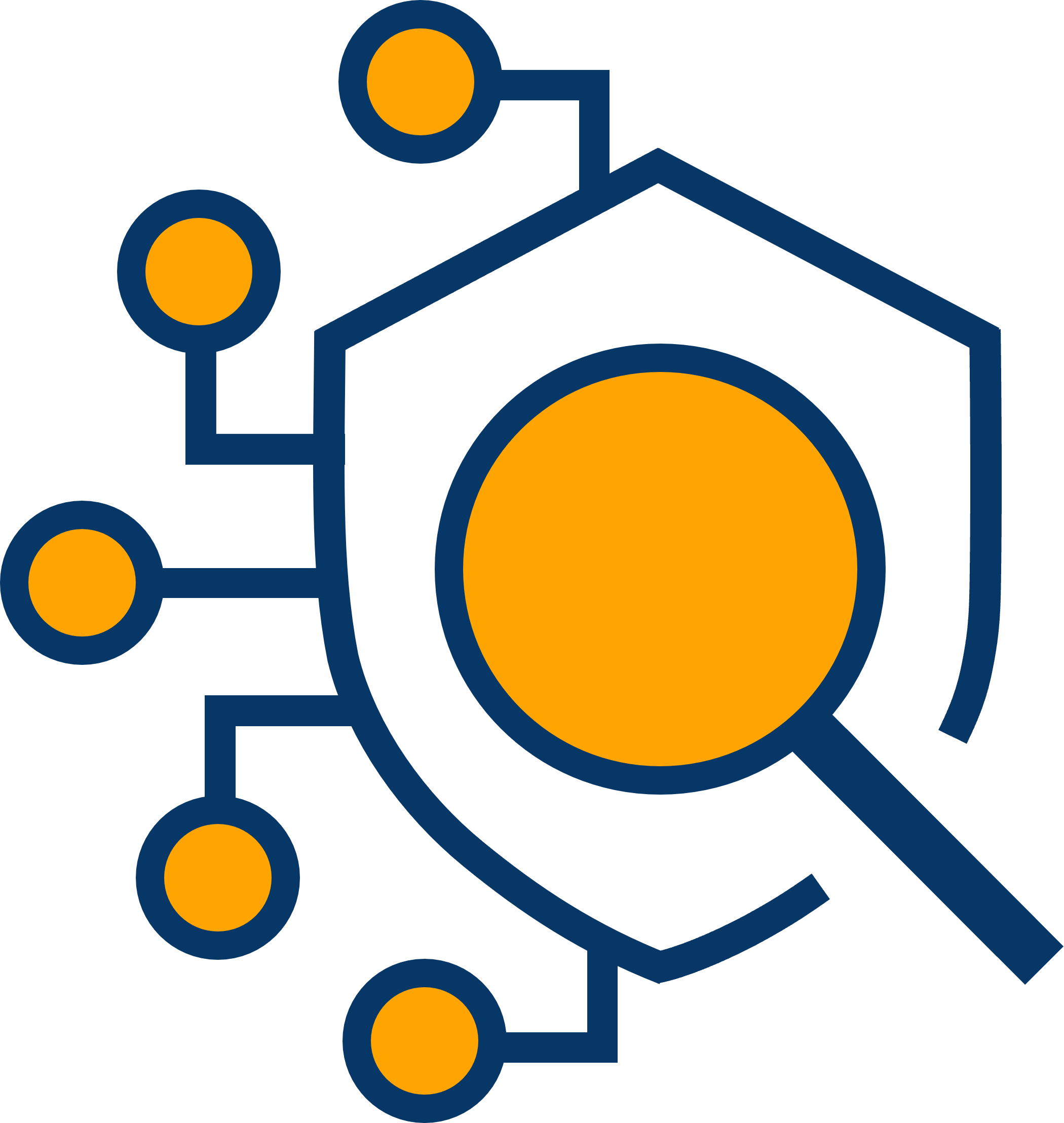Web application attacks account for 26% of all breaches, making them the second most common attack pattern. Recent report findings have revealed that,
- 79% of DevOpSec professionals claim that an average application contains 20 or more vulnerabilities
- More than 99% of security professionals claim that applications in production, on average, have at least four vulnerabilities.
- Only 5% of organizations have avoided application attacks, while 61% have experienced more than three attacks in a year.
- More than two-thirds of organizations have suffered an application attack, resulting in the loss of business-critical data and operational disruption.
These statistics highlight the alarming need to secure web applications to protect organizational assets and enhance operational efficiency. This article will delve into web application security, common threats, types of web application security, and best practices for mitigating web application risks. Before we begin, let us understand what web application security is.
What is Web Application Security?
Web applications are critical in conducting business and determining how we interact with these businesses. From e-commerce platforms to online banking portals, these applications have become a vital aspect of our daily lives. However, these applications have also become potential targets for malicious attackers.
Web application security is a set of processes and technologies that protect web applications, servers, and services from potential cyberattacks. Web application security tools also help websites and applications run smoothly and efficiently during attacks. A crucial aspect of web application security is protecting customers and organizations from losing personal or sensitive information and preventing organizations from suffering the repercussions of an attack, such as legal fines, reputational damage, and operational inefficiencies.
Let us explore some of the common web application security threats and vulnerabilities.
Common Web Application Security Threats
Some of the common security vulnerabilities found in web applications include:
SQL Injection (SQLi)
Structured Query Language (SQL) Injection is a method by which attackers gain access to unauthorized information or assets by injecting specialized SQL statements. They then modify or update user permissions or access controls, eventually leaking or destroying sensitive organizational data.
Cross-Site Scripting (XSS)
Cross-site scripting is a web app security risk in which the attacker attaches malicious code to a legitimate website and executes it when the victim loads it. Attackers can insert malicious code in the URL or directly onto the website. This kind of attack is also known as a client-side code injection attack, which refers to code that runs on the user’s system once they load a web browser.
Credential Stuffing
Credential stuffing is a cyberattack in which the attacker uses a list of credentials acquired through a data breach to log into another service. For example, an attacker takes a list of usernames and passwords from an attack on an IT company and uses it on a bank server to access individual bank accounts.
Denial of Service (DoS)
Denial of Service is when the attacker floods the targeted system or machine with requests to the extent that it cannot tackle regular traffic and requests. As a result, the system becomes sluggish and denies access to existing or new visitors.
Cross-Site Request Forgery(CSRF)
Cross-Site Request Forgery is a type of cyberattack that tricks users into using their credentials to sanction an undesired action, such as changing a password or transferring money. While this cyberattack doesn’t have dire consequences on an individual level, however at an organizational level, it could compromise an entire server and disrupt operations.
Page Scraping
Attackers use this method to employ bots to scrape or steal content from a website at a large scale. This content is repurposed for malicious purposes, such as imitating the page owner’s website to gain traffic, mislead visitors, or tarnish the organization’s reputation.
API Abuse
Application Programming Interfaces(APIs) allow two applications to interact with each other. As the use of APIs increases, so do their vulnerabilities. Attackers could send malicious code into one of the applications or even interrupt sensitive data when transferred from one application to another, leading to the misuse or loss of data.
While these application security threats and vulnerabilities are inevitable, organizations can easily detect them by thoroughly scanning their websites or servers using web application scanning tools.
Why is Web Application Security Testing Important?
Web application security testing is crucial for organizations to protect sensitive data, maintain trust, and ensure business efficiency. It identifies vulnerabilities within web applications that attackers could exploit to gain unauthorized access to critical systems and confidential information.
Regular security testing helps organizations avoid emerging threats, comply with legal and regulatory standards, and prevent potential financial losses and reputational damage. Additionally, it enhances user confidence as customers and partners know their data is safeguarded, making it an essential cybersecurity measure.
Types of Web Application Security Testing
Here are a few web application security testing methods organizations can employ:
Dynamic Application Security Test (DAST)
Dynamic Application Security Test is an automated web application scanning tool that examines a running application to identify security vulnerabilities from an outsider’s perspective. This web app security testing method is suitable for low-risk applications. It adopts an “outside-in” approach to observe the application, examine how it runs, and respond to an attack stimulated by the scanning tool.
Static Application Security Test (SAST)
Static Application Security Tests involve inspecting an application’s source code without executing it. This “inside-out” testing method helps developers detect application bugs without users running the application. Moreover, it allows programmers to systematically detect and fix any security flaws within the application by scanning its source code.
Interactive Application Security Test (IAST)
Interactive Application Security Test combines elements of both SAST and DAST to provide a comprehensive security analysis. This type of testing analyzes code for vulnerabilities while the application is being used, either by a human, a testing application, or any activity that interacts with that application.
By monitoring application behavior and analyzing code in real time, IAST can detect complex vulnerabilities during testing and development phases, offering more accurate insights than either SAST or DAST alone.
Penetration Testing
Web application penetration testing, or pen testing, involves simulated cyber attacks conducted by security professionals to evaluate an application’s security. This hands-on approach identifies any weakness within the organization’s security posture that attackers could exploit and their response strategies in a controlled environment.
In addition to these methods, organizations can deploy web application vulnerability scanners to help them identify security threats within their applications. Let us explore a few web application security solutions.
Web Application Security Solutions
Organizations utilize several web application security solutions to protect their applications from vulnerabilities. Here are a few listed below:
Web Application Firewall (WAF)
Web Application Firewalls are security solutions that help organizations monitor HTTP traffic to and from an application. It analyzes the content of each HTTP request, filters, and blocks any request that may pose a risk to the application. This includes protecting applications from vulnerabilities such as cross-site scripting and SQL injection attacks.
While WAFs can effectively mitigate known and emerging security vulnerabilities, they cannot be utilized as a standalone solution. They must be combined with an advanced web application protection solution or tool.
DDoS Mitigation
DDoS (Distributed Denial of Service) mitigation is crucial for maintaining the availability of web services during an attack. It is a response to DDoS attacks. Effective DDoS mitigation involves detecting and responding to attacks in real-time, often using a combination of traffic analysis, threat recognition algorithms, and filtering systems to allow legitimate traffic while blocking malicious data. This helps prevent service outages that could significantly impact business operations and reputation.
DNS Filtering
Domain Name System (DNS) Filtering is a solution that blocks access to malicious websites and filters out harmful content by intercepting DNS queries and determining if the sites are safe or should be blocked based on policies. This is an essential preventive measure that helps reduce the risk of malware from web browsing activities and can enforce web access policies within an organization.
Attack Surface Management
Attack surface management detects and monitors various points where an attacker can gain unauthorized access to an organization’s data environments. Within the context of web application protection, attack surface management involves identifying all web applications and APIs and the risks within each one. An effective practice would be to continuously monitor the attack surface to detect emerging vulnerabilities and mitigate their impact.
What are the Best Practices for Web Application Security?
As web applications continue to play a critical role in business operations, it is imperative to implement stringent security measures to mitigate risks. Here are some essential web application security best practices:
Implement Strong Authentication
Strong authentication is crucial for verifying the identity of users accessing a web application. Multi-factor authentication (MFA) is a highly recommended method in which users must provide two or more verification factors, significantly reducing the risk of unauthorized access. These factors can include something the user knows (password or PIN) or something the user has (security token or smartphone app).
Another popular method is role-based access control (RBAC), where user access is granted based on the user’s role within the organization, ensuring that users have the minimum level of access necessary to perform their duties.
Update and Patch Applications
Software vulnerabilities are discovered regularly, which is why it is crucial to apply updates and patches promptly. This includes the web applications and the underlying platforms, libraries, and frameworks on which they depend. Organizations can utilize automated web application security tools to detect, download, and install updates for software and dependencies.
Utilize Secure Coding Practices
Developers should follow secure coding guidelines to minimize security risks. This includes validating all user input based on the type, length, format, and range. Organizations can prevent malicious data from entering the system, which could lead to SQL injection, cross-site scripting (XSS), or other types of attacks.
Apply the Principle of Least Privilege (PoLP)
The Principle of Least Privilege (PoLP) ensures that users and systems have limited access to perform their tasks. This reduces the risk of an attacker gaining access to critical parts of the web application through a less secure component.
Encrypt Sensitive Data
Encrypting sensitive data is a fundamental security practice that helps protect data against unauthorized access and breaches. Whether data is at rest in transit, encryption ensures that critical information remains unreadable and secure even if intercepted.
Deploy Web Application Firewalls
Deploying a Web Application Firewall (WAF) can help detect and block malicious web traffic
and attacks, including SQL injection and cross-site scripting (XSS). WAFs act as a shield between the web application and the internet, analyzing incoming traffic to block harmful requests based on predefined security rules.
Cultivate a Security-First Mindset
Promoting a culture of proactive web application security within an organization is essential for protecting against cyber threats. This security-first mindset involves integrating security considerations into the DevSecOps pipeline and every aspect of the software development lifecycle. This ensures that security is not just the responsibility of a single team but a fundamental aspect of the organization’s operations.
With these best practices, organizations can significantly enhance web application security and reduce the risk of data breaches and other security incidents.
Safeguard Your Web Applications with ComplyTec!
ComplyTec is your organization’s trusted partner for cloud security management! We partner with your security team to develop cybersecurity solutions that strengthen protection against threats and vulnerabilities based on your organizational needs.
ComplyTec has provided IT solutions to various North American organizations, including Blue-chip companies and government agencies. We bring vulnerability management and security expertise to your organization while enhancing its operational efficiency.
Strengthen your organization’s web application security efforts with ComplyTec today!
Contact Us
FAQs
- What is a web application security checklist?
A web application security checklist is a comprehensive list of best practices, tasks, and checks that developers and IT teams use to ensure the security of web applications during their lifecycle. This checklist typically includes:
- Implement role-based access controls
- Encrypt sensitive or critical data
- Adopt a DevSecOps approach
- Conduct regular security and pen testing
- Apply patches and update regularly
- Cultivate a security-first culture
- Conduct regular security audits
- Maintain comprehensive reports
- What are the best web application penetration testing tools my organization can use?
According to Gartner, some of the best web application penetration testing tools include:
- Ridgebot by Ridge Security
- X-Force Red Penetration Testing Services by IBM
- Metasploit by Rapid7
- Core Impact by Fortra
- BreachLock Penetration Testing as a Service
- Burp Suite Professional by PortSwigger
- Astra Pentest
- Vumetric Penetration Testing Services by Vumetric
While we have listed a few penetration testing tools, this list is not exhaustive. Your organization may do additional research to determine which pen-testing tool is the most appropriate choice.
Sources:
- F5
- Cloudflare
- Data Dome
- Synopsys
- Imperva
- Checkpoint
- Sentinelone
- Geeks for Geeks
- Crowdstrike
- Synopsis
- Checkpoint
- Cloudflare
- Breachlock
- Radix Web
- Aquasec
- Imperva
- Cloudflare



